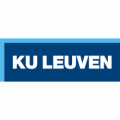SMART HIGHWAY
Challenge
Smart Highway was created on the basis of the CONCORDA framework. This European project contributes to the preparation of European motorways for automated driving and high-density truck platooning. The Smart Highway project aims to go beyond the goals of CONCORDA. Flanders Make teamed up with IMEC to develop a high-tech test environment so as to support the deployment of new technologies and enable offering smart localisation and real-life driver monitoring solutions. To realise this challenge, we needed to develop:
- A flexible 5G-enabled testbed environment by integrating software-defined radio (SDR) modules;
- A distributed computing platform;
- Perception technologies for improved localisation;
- Regulation and policy;
- Traffic modelling;
- Impact assessment.
The ‘Smart Highway’ project aims to set up and deploy a test environment to evaluate these technologies in a common, real-life test environment. In this environment, local mobile network operators will be able to validate their network technology and service innovations towards road users, the automotive industry, etc. This implicates a strong industrial contribution to the project from car manufacturers/OEMs, telecommunication operators, network vendors and ITS service providers.
Project goals
The main goal of Smart Highway is extending the CONCORDA testbed architecture. Smart Highway focuses on location technology, driver monitoring and the construction of a prototype on-board unit (i.e. the hardware used inside the car to communicate with other vehicles and road infrastructure).
The ultimate project goal is a connected smart car.
In order to achieve this goal we will need to extend the CONCORDA testbed architecture with:
- Infrastructure to extend the mobile edge processing capacities to the on-board unit (OBU);
- Software-defined radio (SDR) modules to build a flexible 5G-enabled testbed environment;
- A hybrid simulation environment (i.e. a digital twin of the testbed with virtual vehicles that can interact with the real testbed and with real vehicles) to allow for safe and large-scale testing of autonomous functions under development.
Furthermore, we will need to:
- Extend the OBUs with basic sensing capabilities for autonomous functions (e.g. obstacle detection).
- Extend the distributed computing platform with resource monitoring and resource management functionalities.
- Derive the absolute and relative vehicle location/position in a dynamic environment. This will be done by investigating LTE-V AoA-ToA localisation with a clear focus on tunnels and by building an accurate hybrid GNSS-VLP (Global Navigation Satellite System-Visible Light Positioning) system for seamless localisation of vehicles outdoors and in tunnels.
- Survey driver monitoring technology and define a corresponding system for the contactless, robust, reliable and non-intrusive sensing of vital driver and passenger signs.
- Define the precise impact of the proposed pilot on short- and longer-term processes as well as the objectives of stakeholders in a Flemish self-driving ecosystem, both from a business and traffic management perspective.
Economic value
short-term value
Providing a testbed for the industry (Car manufacturers / OEMs, telecom operators, network vendors and ITS service providers) for further development and validation of their products.
Long-term value
Smoother traffic by adding communication between vehicles and infrastructure. The added communication allows for faster / less abrupt braking, the ability to drive closer together and smooth manoeuvring, which all contributes to fewer accidents and traffic jams.
Project partners





